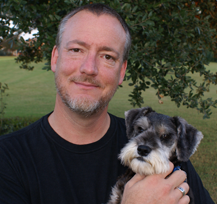All around the metroplex,
the hunters chase the birdies.
Even on a Sunday morning…
POP! goes the shotgun.
Yes, Frisco residents, it’s that time of year once again. In case you haven’t noticed (and how could you miss it) dove hunting season opened at the beginning of September. That means for the next few weekends, every patch of open ground from here to Luckenbach is going to be infested with camo-clad, shotgun-wielding, good ole boys (and gals) hell bent on bagging their limit of these innocuous avians.
You wouldn’t think that the hunting patterns of Hunterous Texicanas would make much difference to us city-dwellers. And up to a few years ago, you’d be right. But in 2005, those sages of legislative imagination in Austin saw fit to over-ride municipal restrictions on gun play within city limits, as long as it’s on a certain 10-acre (or 50-acre for handguns and rifles) parcel of land. Given the number of undeveloped tracts of land in Frisco, this ensures that your fall mornings are punctuated with the popcorn-like exclamations of 20-gauge birdshot.
Now, before we go any further, let me state that I’ve spent some time traipsing across Texas in camouflage. (Not that I’ve ever actually shot anything. But that’s another story.) I can respect the desire to get out into the open spaces, pit yourself against nature and bring home a little extra meat for the dinner table. (Very little meat, in this case. Have you seen the size of those birds? It would take half a dozen just fill out the chicken nuggets in a Happy Meal!)
That said, I do have a problem with hunters plying their trade blocks away from downtown Frisco. It turns out that some 10-acre plots sit right next to residential developments and, in at least one case, a day-care facility. If hunters follow the proper protocols, nobody’s life is in any serious danger. The law stipulates that hunters must be 150 feet from the property boundary to shoot. Given the effective range of a typical bird-hunting shotgun, that should preclude any errant shots from doing damage along the perimeter. But residents and businesses around town are complaining about finding birdshot strewn around their patios, furniture and parking lots. This is, in itself, a violation of the law. Regardless of setbacks or parcel size, it is illegal to discharge a firearm if the projectiles would land on somebody else’s property.
While life and limb are in no real danger from a scattering of birdshot – or even the heavier buckshot – rifles are another story. These, too, are now legal to use within the city on any parcel over 50 acres (we have a few of those, as well). Again, there’s a restriction on the distance a hunter must be from the property line: in this case, a whopping 300 feet. And while a shotgun isn’t likely to do much damage after fifty yards or so, a 30.06 bullet still packs a lethal wallop up to a quarter mile and beyond.
So once again we see a conflict arising from the urbanization of Texas’ open space. It seems every year there’s another example of development encroaching on space where Texans were once free to roam. I’m all for protecting property owners’ rights; particularly where those owners have held their land for much longer than most of Frisco even existed. But we have to recognize the reality of suburban growth and balance public safety against the limitation of certain of those rights. It doesn’t take a Nostradamus to see that sooner or later someone or something is going to get hurt by errant ammunition. We can only hope the damage is limited to some buckshot taking out a window or two.
Meanwhile, Frisco isn’t going anywhere. In fact, despite the recent “hiccup” in the economy, it’s going to keep getting bigger. Let’s hope our legislators recognize the inherent danger of this situation and allow local governments to regain regulation of firearms within city limits.


